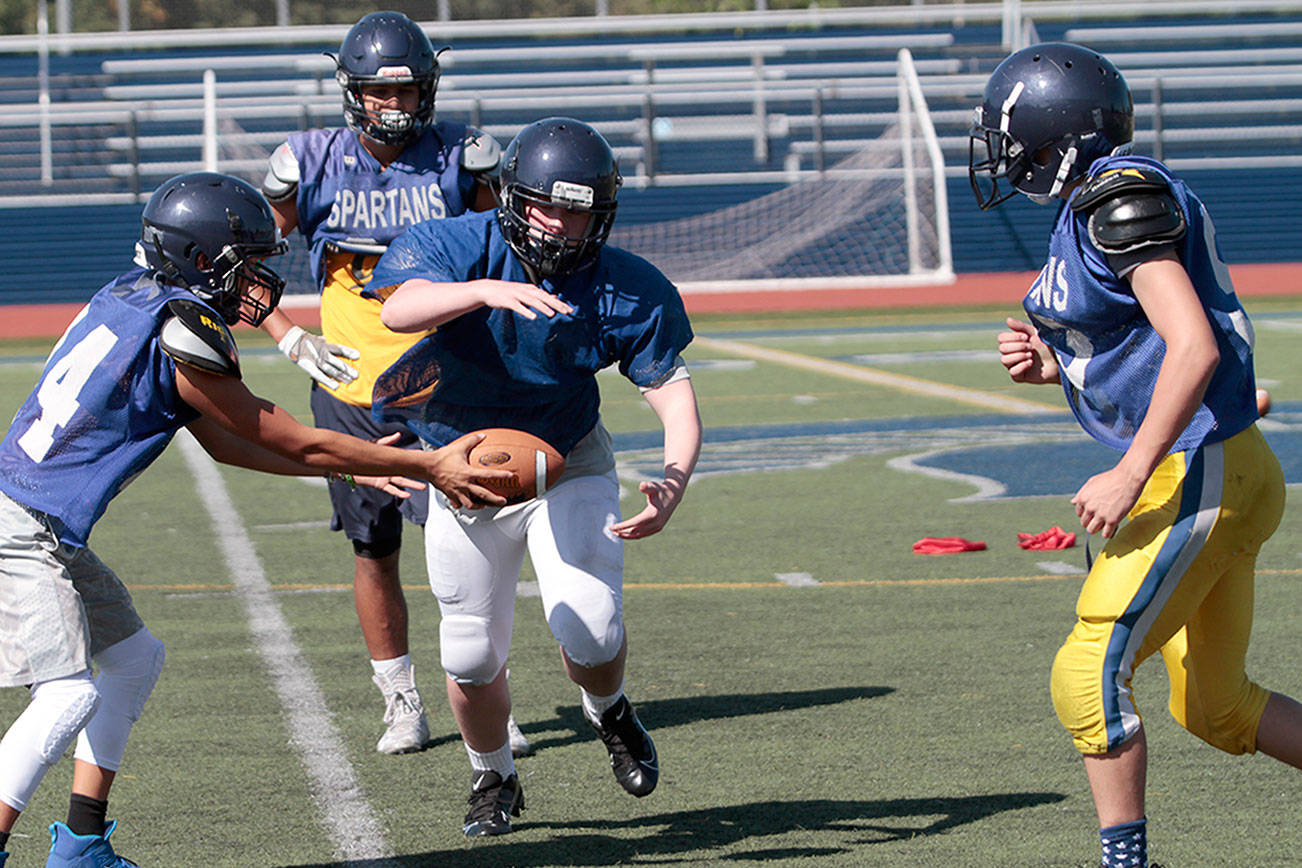A dozen students suffered concussions while playing sports at Bainbridge High School last fall.
BHS Athletic Trainer Amanda Sageser recently told school district officials that at least 12 students got concussions during the fall sports season alone last year, and about 10 have already suffered concussions so far this year while participating in autumnal athletics.
The report came during the school board’s first meeting this month, where officials adopted an updated procedure relating to students sports-related head injuries and cardiac arrest, Procedure 3422.
Sageser said the injuries haven’t occured in a single fall sport this year.
“We’ve had about 10 at this point, and evenly split among males and females,” Sageser said.
Football leads the stats, she added, with five concussions being reported in that program this season. There were also three concussions in girls soccer, and two in cheer.
At the meeting, Sageser told district officials that all student athletes are “tested for a baseline” at the start of the season. They can have quick sideline evaluations at sporting events, too. Then, once back at school, a computer test is given to diagnose a concussion.
If one is identified, the student checks in daily with the athletic trainer until they are free of symptoms and cleared by Sageser and a doctor to resume playing.
Sageser said she encourages affected students to stay home and asks teaching staff to provide accommodations, such as releasing the student if they’re not feeling well and providing extended time to complete assignments or the option to reschedule a test.
The issue of sports-related head injuries is much in the news of late, with increased attention being paid to the long-term effects of such injuries at every level of play, especially in football.
Despite a recent historic two-season upswing in the program at BHS, ironically, football in general is having a rough go of it these days — and not just in America.
Football Canada, the sanctioning body for American-style football in that country, recently approved a full-squad tackle football ban for kids under 13 starting in 2022. And some American legislators (most notably in Massachusetts) are pushing to institute similar bans.
As reported by Forbes’ sportswriter Bob Cook, “In April [2019], University of Washington School of Medicine researchers released a survey of 1,025 parents (55 percent of them mothers, 45 percent fathers) nationwide finding 61 percent of parents supported bans on youth tackle football.”
Tackle football participation both in Canada and America has reportedly dwindled considerably in recent years, amidst a generally rising awareness of the impact of head trauma on brain health, though experts say other factors are also affecting the sport’s traditionally consistent allure.
“Concussion fears aren’t the only reason for football’s decline,” Cooke wrote. “For example, parents are putting their kids in sports like lacrosse that still carry a high risk of concussions relative to say, track, but that are also perceived as aspirational activities for more well-heeled families.”
At BHS, lacrosse is a club sport, and, as such, Sageser said she had no data about its injury trends.
All that being said, there seems little cause for football fans to sweat.
The National Federation of High School Associations reported that while the number of 11-player football participants is down 6.5 percent from its peak (in 2009), it is still the most popular sport played by high school boys in the country.



